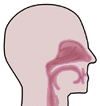  |
||
 |
December 2018What differentiates auditory from olfactory hallucinationsAuditory hallucinations, hearing voices which are not there, are usually considered symptoms of schizophrenia. Olfactory hallucinations, smelling odors which are not there are usually considered manifestations of brain pathology, e.g., auras in epilepsy, migraine or brain tumors. What distinguishes the mechanisms which underlie the pathology of these hallucinatory behaviors related to these two sensory modalities? On the one hand, hearing voices which are not there is considered a “mental” disorder– whereas on the other hand, smelling odors which are not there is considered brain pathology. What is the difference? In reality, this question has never been asked. It requires an understanding of the nature of the hallucinatory mechanism itself, their similarities and their differences. Most of these differences are still unknown. There are two major categories of auditory hallucinations – voice hearing and tinnitus. Voice hearing is related to some form of mental disorder with voices usually negative, accusatory and considered a form of harmful intent and paranoia. Tinnitus is usually related to some pathological abnormality of the auditory receptors of the hearing system. There is only one major form of olfactory hallucination – the smelling of odors in the nose in the absence of an external odor – odors which are usually considered unpleasant and are usually describe as pungent, burned, chemical and obnoxious Treatments of both forms of auditory hallucinations are uncertain. Treatment for voice hearing is usually psychological in nature. However, repetitive transcranial magnetic stimulation (rTMS) has been considered useful in some patients with tinnitus. Treatment of olfactory hallucinations has been variable, usually related to treatment of the underlying problem– excision of the brain tumor, inhibition of the seizure disorder, or in the case of spontaneous olfactory hallucinations, repetitive transcranial magnetic stimulation (rTMS). For more information and differences among these hallucinations a review of some studies maybe useful. References
|
|